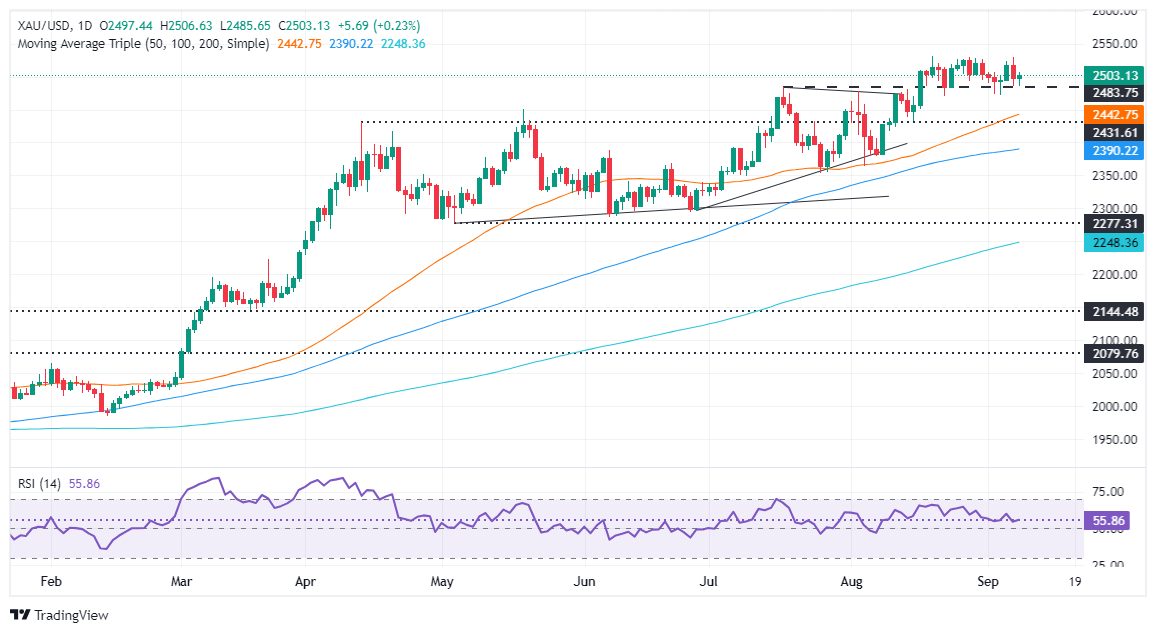
Gold prices advanced on Monday, with XAU/USD trading at $2,502, up 0.23%, as traders anticipated the release of August’s US inflation report and looked for signs of a possible rate cut by the Federal Reserve (Fed) of either 25 or 50 basis points. Despite the broad strength of the US Dollar Index (DXY), which gained over 0.30%, gold traders continued to drive prices higher.
The market sentiment improved overnight, supported by gains in US equities, while US Treasury bond yields dipped slightly across both short and long ends of the curve. The 10-year Treasury note yield remained stable at 3.706%, unchanged from last Friday’s close. Meanwhile, traders have reduced the likelihood of a 50 basis point rate cut after the recent Nonfarm Payrolls (NFP) data, which, despite falling short of expectations, showed a drop in the Unemployment Rate from 4.3% to 4.2%.
Attention now turns to the upcoming Consumer Price Index (CPI) report, expected to edge closer to the Fed’s 2% target. The CME FedWatch Tool indicates that the odds for a 25 basis point rate cut have climbed to 73%, while the chance of a 50 basis point cut stands at 27%. A market analyst quoted by Reuters suggested that a smaller 25-basis-point cut seems more likely, aligning with broader market expectations.

Earlier data showed that the New York Fed’s inflation expectations remained at 3%, consistent with the previous survey, but still slightly above the Fed’s target. Gold prices have held above the critical $2,500 level, although the momentum appears to be stalling below $2,510. The Relative Strength Index (RSI) remains flat, indicating uncertainty among traders.
If gold manages to break above the year-to-date high of $2,531, it could target the next resistance level at $2,550, with a potential move towards the psychological $2,600 mark. However, a decline below $2,500 could expose the support at the August 22 low of $2,470, and if breached, the next key support area would be around $2,450 to $2,440, where the May 20 high intersects with the 50-day Simple Moving Average (SMA).



